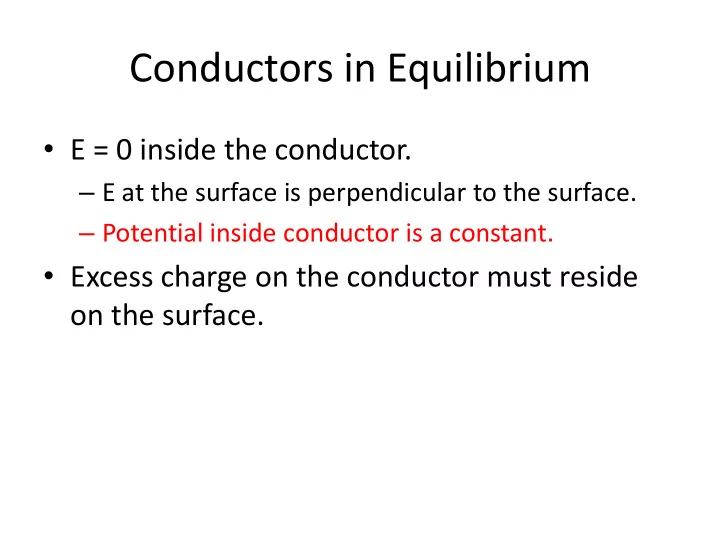

Conductors in Equilibrium • E = 0 inside the conductor. – E at the surface is perpendicular to the surface. – Potential inside conductor is a constant. • Excess charge on the conductor must reside on the surface.
Spherical conductor in Equilibrium • Potential inside the conductor is a constant: kQ V in R • Potential of conductor is proportional to charge on it.
Capacitor • Two (or more) conductors at different potentials form a capacitor. • A capacitor “stores” charge and energy. • Capacitance: – Charge “moved” from one conductor to the other is proportional to the potential difference between the conductors: Q C V – Constant of proportionality C is called capacitance . – Capacitance is a geometric and materials property. – Units: Farad = Coulomb/Volt
As the voltage in the circuit is increased, the capacitance 1) increases. 2) decreases. 3) does not change.
Parallel-plate Capacitor • Electric Field for “infinite” sheet of charge: E 2 0 Area A d
Parallel-plate Capacitor 0 A • With “nothing” (air) in the gap, C d • The capacitance changes when a dielectric (insulator) is placed in the gap.
Figure 24.17b
Figure 24.17c
Parallel-plate Capacitor 0 A • With “nothing” (air) in the gap, C d • The capacitance when a dielectric (insulator) 0 A is placed in the gap is C d
Recommend
More recommend